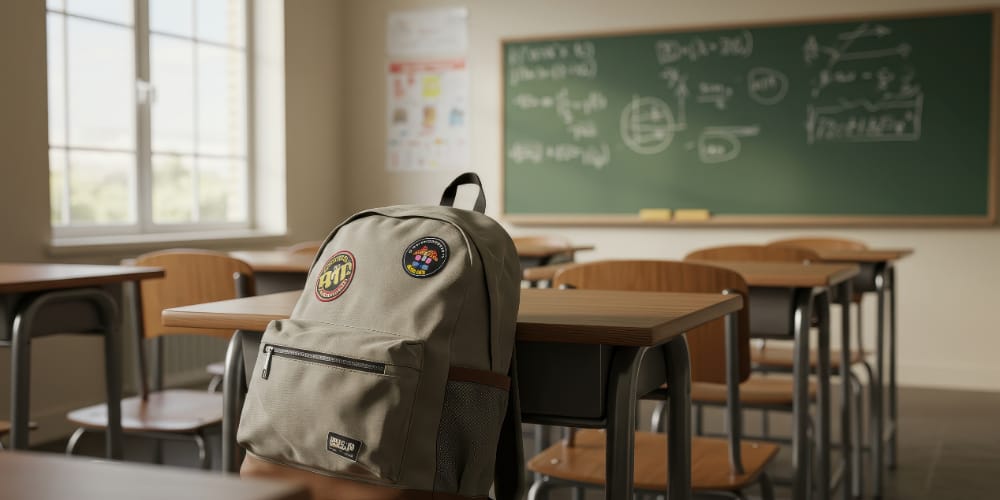- Playground Post
- Posts
- 🛝 Vocational Programs Boom, Rural Teacher Crisis Deepens, School Closures Accelerate
🛝 Vocational Programs Boom, Rural Teacher Crisis Deepens, School Closures Accelerate
What this means for educators + more
Welcome to Playground Post, a bi-weekly newsletter that keeps education innovators ahead of what's next.
This week's reality check: Students are racing toward practical credentials and community college programs while four-year degrees stagnate. Rural districts can't find teachers as federal policies eliminate their hiring options. And K-12 enrollment declines are triggering a wave of school closures and consolidations that will reshape public education for decades
Have a Bold Idea to Transform Learning?

We’d like to invite you to join the next 4.0 Essentials Fellowship - a hands-on experience to test your idea, get $500 to pilot it, and connect with education innovators.
or if you know someone great for this - nominate a potential changemaker!
💎 Data Gem
The AI in education market reached $7.57 billion in 2025 (up from $5.47 billion in 2024), growing at 38.4% annually and projected to hit $112.3 billion by 2034.
Students Ditch Computer Science for Trades and Healthcare

Undergraduate enrollment is growing for the third straight year - up 2.4% overall this fall.
But beneath that headline, there's a massive shift happening in what students choose to study.
Computer science is collapsing across the board. Graduate programs saw a 15% nosedive, while two-year institutions lost 5.8% of their computer science students.
At the same time, students are flooding into vocational programs.
Engineering technologies at two-year colleges jumped 8.3%, and mechanic and repair programs grew 10.4%. Health professions are surging too - up 6.2% for bachelor's degrees.
Community colleges are the clear winners. Public two-year institutions saw 4% enrollment growth, outpacing four-year publics at 1.9% and private nonprofits at just 0.9%.
What's driving the shift?
National Student Clearinghouse researchers pointed to AI-related layoffs in tech sectors. Students are watching the news about tech industry challenges and adjusting their plans accordingly.
Certificate programs are also booming - up 6.6% for undergraduate certificates and 3.1% for associate programs. Bachelor's degree enrollment, by comparison, grew only 1.2%.
The trend suggests students are prioritizing practical skills and faster pathways to employment over traditional four-year degrees. Programs that offer clear career outcomes and hands-on training are capturing enrollment growth, while fields perceived as oversaturated or AI-vulnerable are losing ground.
Rural Schools Face Collapse as Federal Policies Cut Teacher Pipeline

In Halifax County, North Carolina, 101 of 156 teachers are international. At Everetts Elementary, only 2 of 17 teachers are from the United States.
This isn't an outlier. It's the reality of rural teacher recruitment in 2025.
When schools post openings, few if any U.S. citizens apply. One principal received just three applications for a fourth-grade position this summer - only one was a licensed U.S. teacher.
Nationally, 1 in 8 teaching positions are either vacant or filled by uncertified teachers, according to Learning Policy Institute data. Rural districts have been filling gaps with H-1B visa holders, allowing international teachers to work for about five years.
For rural districts already struggling with tight budgets, the new $100,000 H-1B visa applicant fee effectively eliminates international hiring as an option.
The timing couldn't be worse.
This spring, the Education Department also eliminated teacher residency and training grants specifically designed for rural schools. In November, the administration discontinued $20+ million in Augustus F. Hawkins Centers of Excellence grants supporting teacher preparation at HBCUs, tribal colleges, and minority-serving institutions.
"We're not only talking about a recruitment and retention problem. We're talking about the collapse of the rural teacher workforce," said Melissa Sadorf, executive director of the National Rural Education Association.
Rural districts are now considering class size waivers and other strategies to operate with fewer teachers. Education innovators have a chance to step in with bold, community-rooted solutions—developing new pathways into teaching, redesigning staffing models, and creating talent pipelines that can help rural schools not just survive, but reimagine what’s possible.
K-12 Enrollment Declines Force Wave of School Closures

School districts nationwide are confronting significant enrollment drops, triggering plans for closures and consolidations from Texas to Florida to Wisconsin.
Wisconsin saw enrollment fall 6% in one year - a loss of 46,180 students.
Chicago Public Schools dropped 9,081 students between 2024-25 and 2025-26, leaving more than 1 in 3 desks empty across the district.
Alabama experienced its steepest enrollment drop in 40 years, falling 0.8% to 714,358 students. The state superintendent projects needing 500 to 700 fewer teachers by 2026-27.
West Virginia has lost 10.9% of its public school enrollment since 2017-18. Over 70 schools have closed since 2019, and more closures are on the way according to the West Virginia Center on Budget & Policy.
Montgomery County Public Schools in Maryland projects enrollment will fall from 156,541 to 149,706 over the next six years. The superintendent says it's too soon to determine if closures will be necessary, but the trajectory is clear
Multiple factors are driving the decline.
Birth rates have fallen consistently over the past decade and school choice programs are pulling students out of traditional public schools - Alabama's new CHOOSE Act voucher program alone enrolled 23,000 students this year.
At the same time, the expiration of federal COVID-19 relief funds means districts can no longer delay tough financial decisions. One state representative said the number of districts "is going to have to drop" from its current count of 421.
Districts face a challenging equation: declining enrollment plus expired federal aid plus fixed facility costs. The result is consolidation pressure that will reshape the public education landscape in ways not seen in decades.
Amid this changing landscape, innovators have a rare opportunity to design new school models, community partnerships, and learning pathways that meet families where they are and reimagine how schools can thrive in an era of declining enrollment.
⚡️More Quick Hits
This week in education:
• Special ed reporting changes proposed - Education Department wants to end requirement that states report changes to methods for calculating "significant disproportionality" in special education, drawing 94 overwhelmingly negative public comments
• NYC suspensions hit post-pandemic low - Schools issued 27,143 suspensions in 2024-25 (down 2.1%), but disparities persist with 39% going to Black students who represent only 19% of enrollment
• Teacher prep grants eliminated - Trump administration discontinued Augustus F. Hawkins Centers of Excellence grants at HBCUs and minority-serving institutions, affecting hundreds of aspiring educators through 2029
• Tri-share child care model expands - More states testing financing model where employers, government, and families split child-care costs to expand access
📚 Weekend Reads
Monthly roundup of resources you might like:
Academic Recovery Still Elusive — Data showing students need 4.8 additional months in reading and 4.3 months in math to reach pre-pandemic levels.
Current Term Enrollment Estimates — Spring 2025 undergraduate enrollment up 3.5% to 15.3 million students, with community colleges leading the resurgence at 5.4% growth
Educator Pay Rankings 2024-25 — State-by-state analysis showing average teacher salary reached $74,177, yet inflation has teachers earning 5% less than a decade ago
Public Confidence in Schools — Record-low public approval with only 13% giving schools an A or B grade, and 59% of parents preferring private school options with public funds
To stay up-to-date on all things education innovation, visit us at playgroundpost.com.
What did you think of today’s edition? |